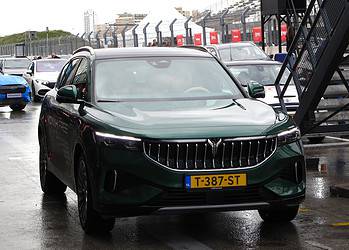Over 90% of the car-owning households in the US could reduce the amount they pay to power their vehicles and their greenhouse gas emissions if they switched to electric, a new study has found. However, over half of the lowest-income US households (about 8.3 million people) would still face significant expenses when fueling their vehicles — if the electric car industry wants to truly be equitable, it must not let these people behind.

Transportation accounts for the largest share of greenhouse gases (GHG) emitted in the US, with direct emissions from passenger cars and light-duty tracks comprising 16% of total GHGs. Electrification is the main way to reduce these emissions, and recent policies in the country are indeed suggesting an increasing momentum for EV adoption.
Electric cars already tend to be cheaper in the long run, as the fuel can be cheaper, and they typically require less maintenance and part replacement. But the upfront cost can still be a problem.
While EV adoption can reduce GHG emissions, previous studies have shown that low-income households face disproportionate burdens. In a new study, researchers from the University of Michigan analyzed the EV energy costs through the lens of distributive justice, calculating the EV energy burden (% spent on charging) for the entire US.
“Our results confirm the potential for widespread benefits from EV adoption,” Joshua Newell, study author and researcher, said in a statement. “However, EV ownership in the US has thus far been dominated by households with higher incomes and education levels, leaving the most vulnerable populations behind. Policy interventions are needed.”
Benefits and impacts of the transition
The researchers used a geospatial model to assess three factors associated with the EV transition: GHG emissions, transportation energy burden, and fuel cost. The researchers calculated the census tract-level transportation energy burden of new EVs and internal combustion engines, also estimating the emissions for each vehicle based on the census data.
EVs currently account for about 1% of the cars, SUVs, and pickups in the US. If all the other vehicles would be replaced with new EVs, the benefits would vary widely from place to place, the study found. For 60% of car-owning households, the money and emissions saved would be moderate to high – with the America West and the Northeast benefiting the most.
If they would buy an EV, households in some of these locations could lower their annual transportation energy costs by $600 or more, as well as bring down their carbon footprint by more than 4.1 metric tons of CO2 equivalents, the study found. However, such benefits wouldn’t be extended to lower-income households in other parts of the country.
Very high EV transportation energy burdens, going from 10% to 64%, would remain for some of the lowest-income households and would be concentrated in the Midwest and in Hawaii and Alaska – the two states with the highest electricity prices. About 8% of all households (9.6 million) would see how savings in energy burdens and emissions by changing to an EV.
“We identified disparities that will require targeted policies to promote energy justice in lower-income communities—including the subsidizing of charging infrastructure—as well as strategies to reduce electricity costs and increase the availability of low-carbon transportation modes such as public transit, bicycling and car sharing,” study author Jesse Vega-Perkins said in a statement.
The main conclusion is that, for most Americans, switching to an electric car would already be a boon; if the industry can’t offer solutions, then perhaps policymakers can help make EVs more equitable and affordable to those who need it the most.
The study was published in the journal Environmental Research Letters.






